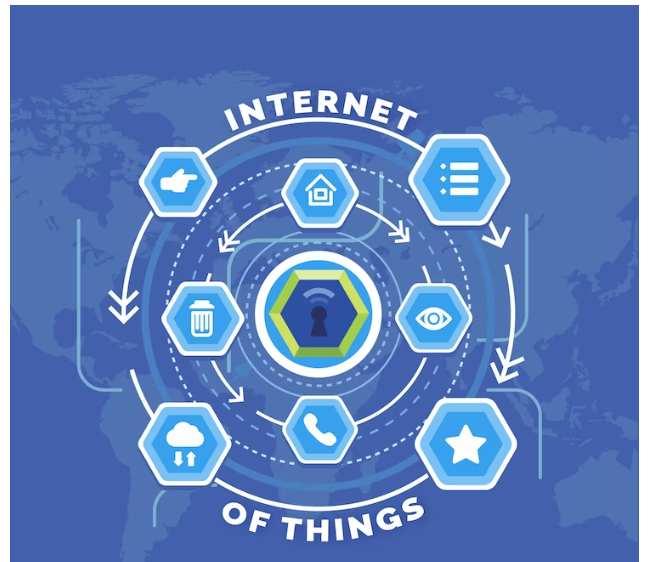Within the quickly advancing scene of innovation, the Web of Things (IoT) has risen as a transformative drive. At the heart of this computerized insurgency lies Machine-to-Machine (M2M) communication, a concept that’s reshaping the way gadgets and frameworks connect with each other. In this article, we dig profound into M2M in IoT, characterizing its substance, investigating its importance, and shedding light on its effect.
What is M2M in IoT?
Machine-to-machine (M2M) communication is the spine of the IoT biological system. It alludes to the consistent and computerized trade of information between gadgets without the requirement for human intervention. In less complex terms, M2M enables gadgets, sensors, and machines to communicate straightforwardly with each other, making them clever and capable of performing assignments effectively.
Within the setting of IoT, M2M is the imperceptible string interfacing the physical and digital worlds. Envision a keen domestic where your indoor regulator communicates together with your lighting framework to alter brightness based on the encompassing temperature. This interaction is made conceivable by M2M communication. It’s the stick that ties IoT gadgets together, empowering them to work in concordance and react to changing conditions quickly.
The Importance of M2M in IoT
M2M in IoT holds colossal importance, and here’s why:
Effectiveness Upgrade:
M2M communication optimizes forms, decreases human mistakes, and improves general proficiency. In mechanical settings, machines can communicate to facilitate assignments, anticipate support needs, and dodge expensive downtime.
Real-time Experiences:
M2M empowers the collection and transmission of real-time information. For occurrence, in healthcare, wearable gadgets can persistently screen a patient’s crucial signs and right away caution restorative experts in case of irregularities.
Adaptability:
As the IoT biological system develops, M2M suits the expanding number of gadgets consistently. It’s outlined to handle large-scale organizations, making it versatile for different businesses and applications.
Cost Effective:
By automating communication and decision-making forms, M2M decreases operational costs. For instance, shrewd horticulture frameworks can utilize M2M to optimize water systems based on soil dampness levels, moderating water assets.
Made strides in Decision-making:
The information traded through M2M engages organizations with important bits of knowledge. For occurrence, in retail, keen racks prepared with RFID sensors can screen item levels, making a difference in businesses making educated restocking choices.
Upgraded Client Experience:
M2M empowers a more personalized client encounter. In shrewd homes, apparatuses can learn client inclinations and alter settings appropriately, making life more helpful and enjoyable.
Understanding M2M in IoT: Key Components
To comprehend M2M completely, it’s fundamental to get a handle on its key components:
IoT Gadgets:
These are the physical objects inserted with sensors, actuators, and communication modules. They can run from keen indoor regulators and mechanical robots to wearable wellness trackers.
Communication Conventions:
M2M depends on communication conventions like MQTT, CoAP, HTTP, and WebSockets. These conventions administer how gadgets send and get information, guaranteeing effective and secure transmission.
Data Share:
Gadgets trade different sorts of information, including sensor readings, status overhauls, and commands. This information is the backbone of M2M, empowering gadgets to create informed choices and take suitable actions.
Network Choices:
M2M communication can happen through different network choices, such as Wi-Fi, cellular systems, Bluetooth, and LoRaWAN. The choice of the network depends on variables like extent, power utilization, and data volume.
Cloud Computing:
Cloud stages play a crucial part in M2M by giving capacity, preparation, and examination of the tremendous sums of information produced by IoT gadgets. This empowers businesses to extricate profitable experiences and make data-driven choices.
Security Measures:
Guaranteeing the security of M2M communication is vital. Encryption, verification, and secure bootstrapping are some of the security measures executed to secure information and gadgets from cyber dangers.
Future of M2M in IoT
As innovation proceeds to progress, the future of M2M in IoT looks unimaginably promising. Here are some patterns and improvements to observe:
5G Network: The rollout of 5G systems will essentially improve M2M communication by giving speedier, more dependable associations, empowering applications that request tall transfer speed and ultra-low idleness.
Edge Computing: Edge computing will become more predominant, permitting information preparation to happen closer to the gadgets. This decreases idleness and enhances real-time decision-making in M2M scenarios.
AI and Machine Learning: Integration of AI and machine learning calculations into M2M systems will empower gadgets to form more modern choices and expectations based on given information.
Independent Frameworks: M2M will play an essential role in the improvement of independent frameworks, such as self-driving cars and rambles, where fast information trade is basic for secure and proficient operation.
Conclusion
Machine-to-machine (M2M) communication within the Internet of Things (IoT) is the establishment upon which long-term associated gadgets and smart frameworks are being built. Its capacity to empower gadgets to communicate consistently, make brilliant decisions, and improve productivity has far-reaching suggestions for different businesses. As innovation proceeds to advance, M2M in IoT will proceed to advance, bringing around modern conceivable outcomes and changing the way we live and work.

